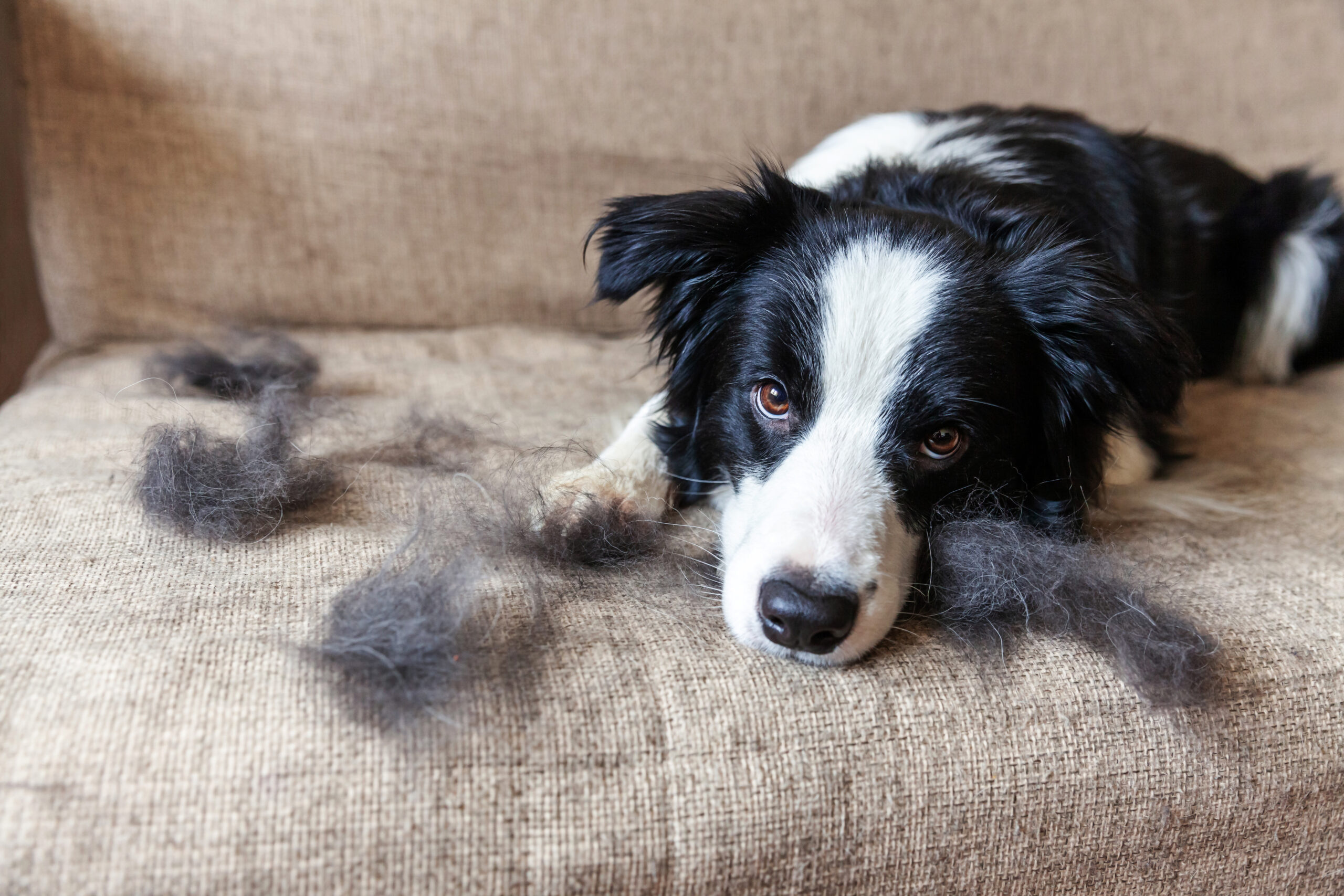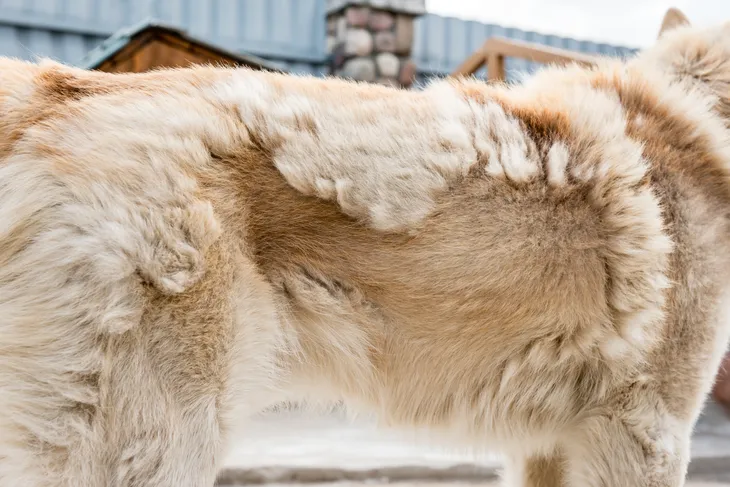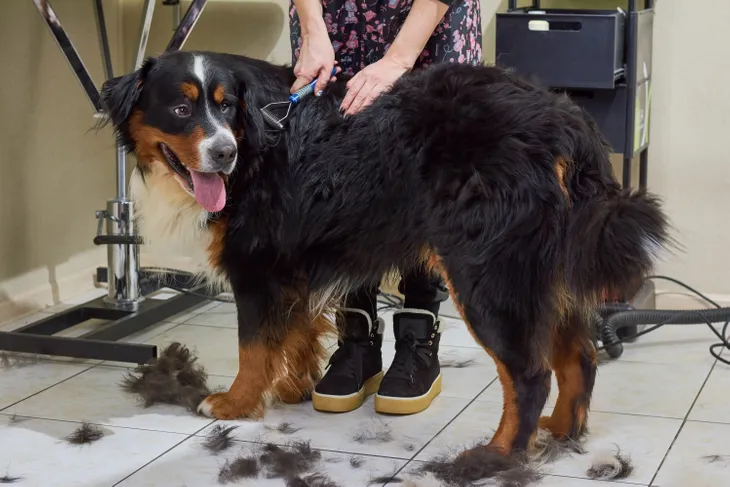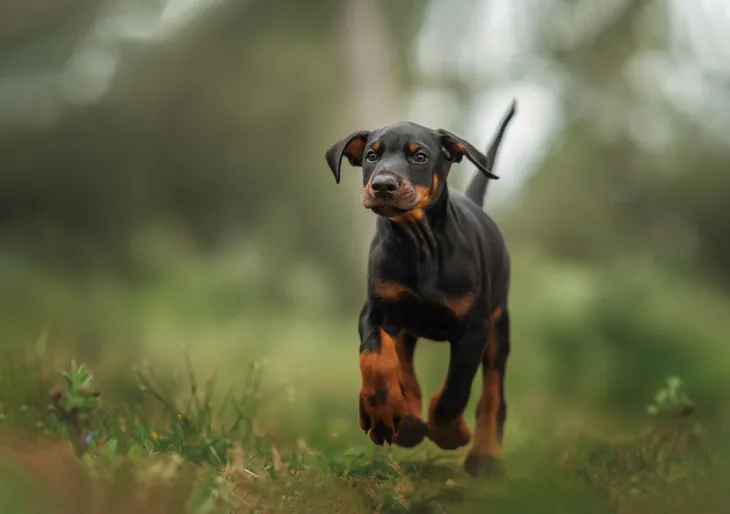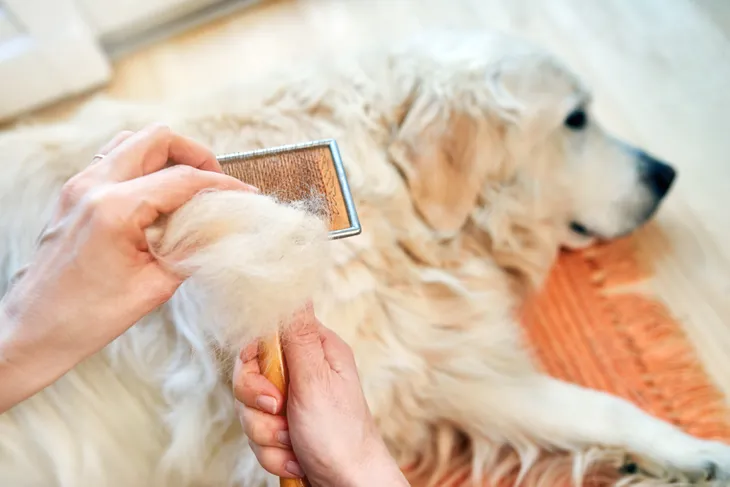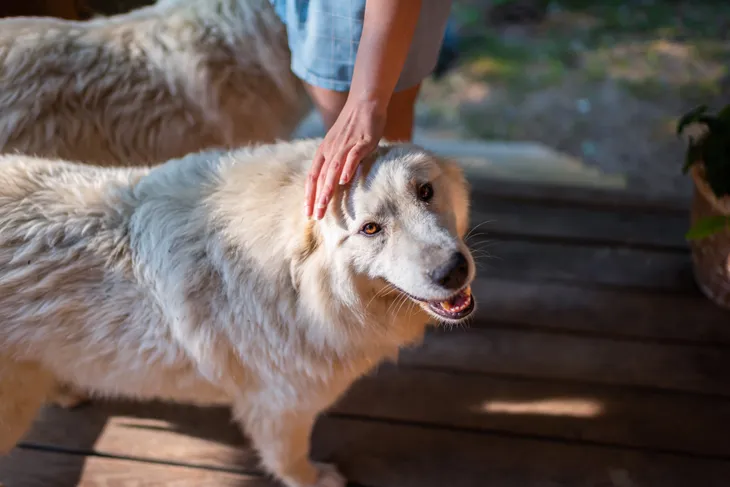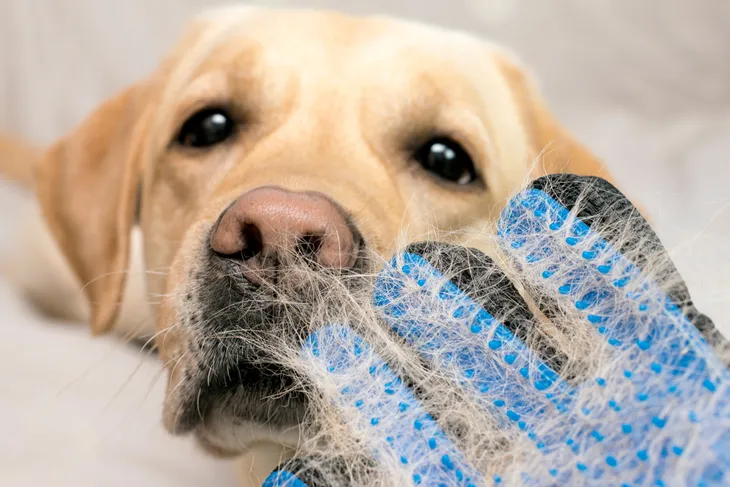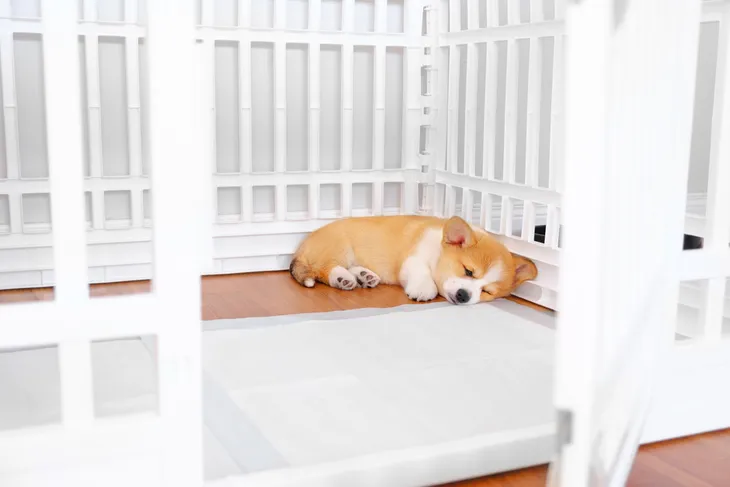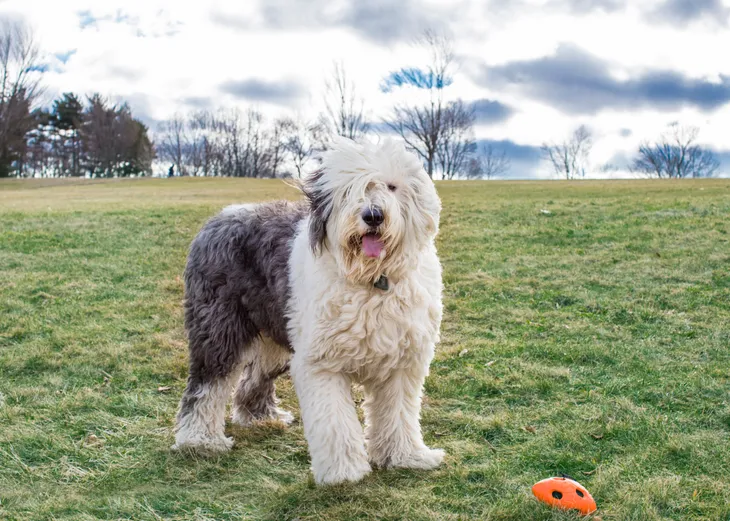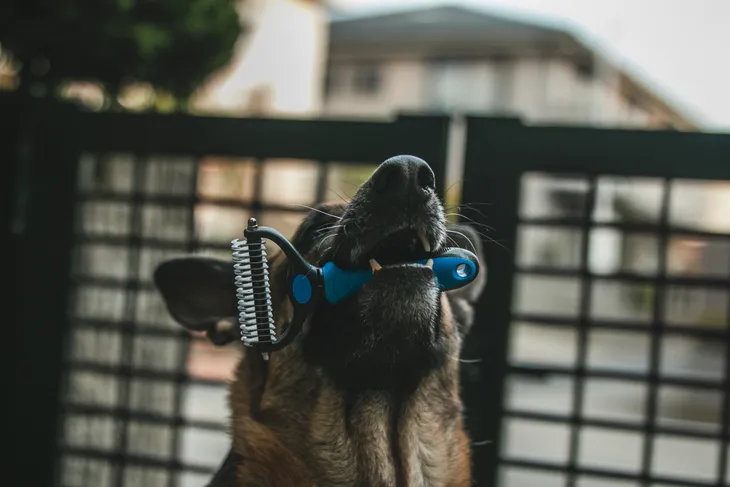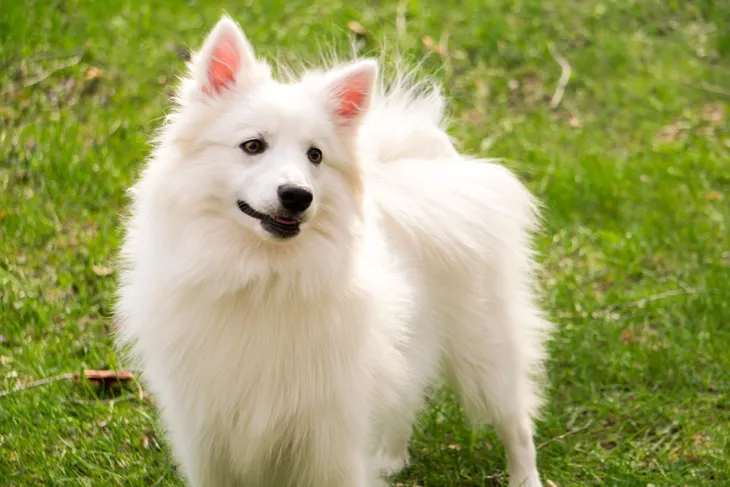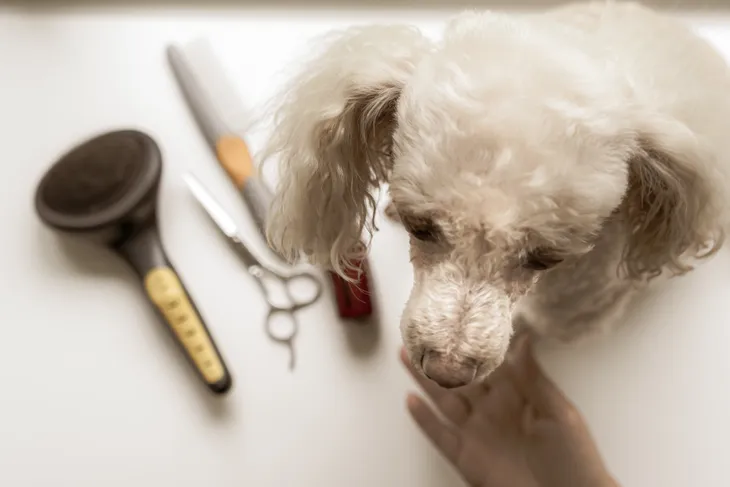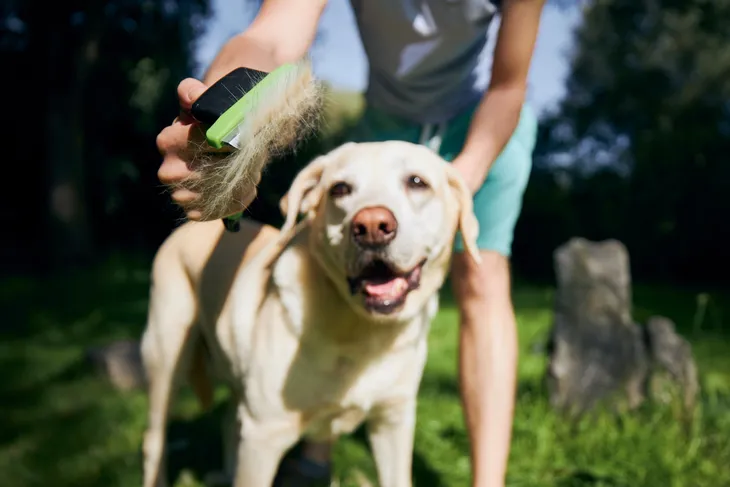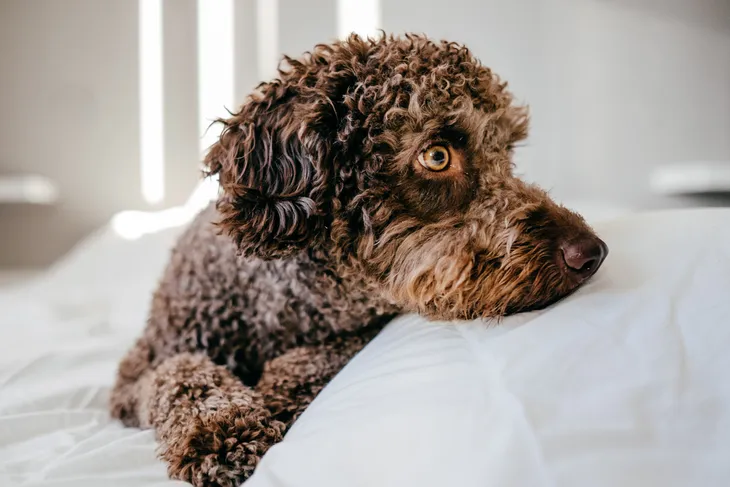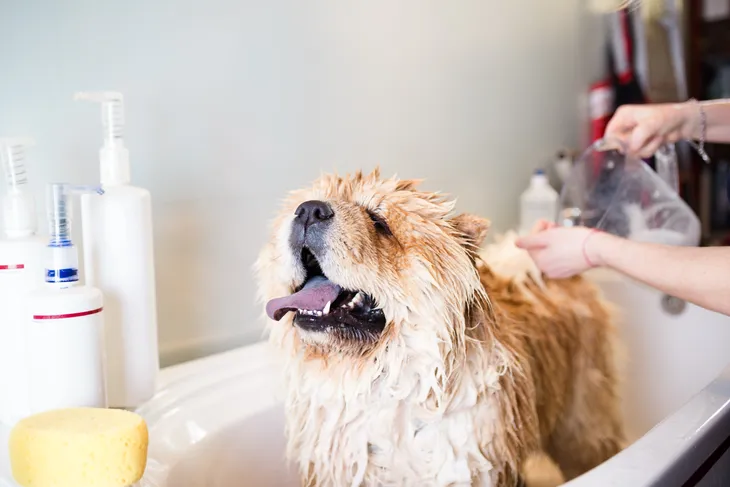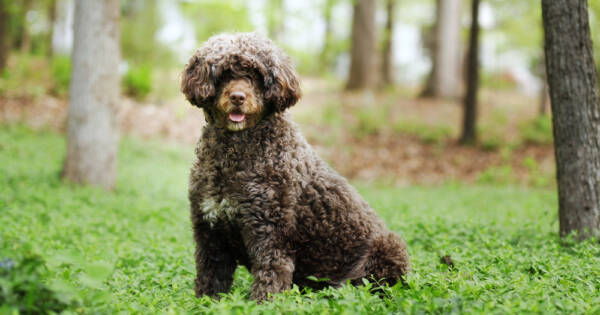- Dogs with thicker fur and double coats are more likely to shed a lot.
- If you have allergies, you should avoid breeds that shed a lot and look for a hypoallergenic breed instead.
- Dogs may shed seasonally or year-round, so the best grooming strategy depends on the kind of dog.
- If your dog sheds excessively, you may need to evaluate whether they have a medical condition or have special nutritional needs.
- Regular brushing and grooming helps control the amount of fur your dog sheds and is critical to their overall health.
Every dog sheds to some degree. Depending on the type and texture of their coat, your dog may shed more at different times of the year or consistently all year long. Shedding helps remove dead skin and hair follicles to keep the scalp and skin healthy. For seasonal shedders, new hair comes in fastest when preparing for temperature changes, such as from cool spring weather into summer or from fall into winter.
Why Does Shedding Matter?
Some people are allergic to pet dander, which often coats the hair that dogs shed. Dogs who shed a lot can irritate allergy sufferers, who are best off with hypoallergenic breeds that don’t shed as much. Dogs who shed a lot require more and frequent grooming and cleaning. Their owners also end up spending more time cleaning their homes, as dog hair can become a trap for dust, bacteria and other airborne pathogens.
Monitoring your dog’s shedding is important because excessive shedding can sometimes indicate something is wrong. Since some dogs are natural shedders, it’s especially important to have a baseline to compare with. When your dog sheds too much or begins to scratch or paw at their skin frequently, it’s time to talk to your veterinarian.
Which Breeds Shed the Most?
While most of the top shedders are double-coated, all dogs shed to some degree. If shedding is one of the factors you want to include in your choice of breed, you can refer to the AKC Breed Guide for useful information, such as how much each breed sheds. Let’s take a look at some of the top shedding breeds.
1. Bernese Mountain Dogs
These dogs are extremely friendly and energetic, but they deposit hair everywhere they go. Their double coats evolved from harsh, wintry conditions in the Swiss mountains. If you live in a warmer climate, expect to see seasonal shedding every spring and fall as their coats adjust to the weather.
2. Dobermans
While Dobermans have a single, smooth coat, they shed year round. They need to be brushed regularly to pull out any existing shed and keep their coats healthy and attractive.
3. Golden Retrievers
Golden retrievers are patient, kind, forgiving and intelligent, making them one of America’s favorite breeds. While they’re a wonderful breed for families, you’ll notice their hair all over your furniture, on your clothes, in the corners of the room and other places you wouldn’t even expect. Golden retrievers shed seasonally, so it’s a good idea to bring them to a professional groomer at least twice a year.
4. Great Pyrenees
This very livestock protection breed is known for its massive size and sweet demeanor. The good news is that their hair doesn’t tangle or mat easily and they don’t trap dust mites with their fur. The bad news is that you’re going to spend a lot of time cleaning the house during the spring and fall if one of these dogs is part of your family.
5. Labrador Retrievers
These dogs have short double coats, and it’s the undercoat that makes them big shedders. The undercoat needs to be shed in order to allow the fur to breathe so that it can repel moisture, keep these dogs cool in the summer and retain heat during cold months. Labs are intelligent and playful dogs, so if you’re willing to clean your house more often, you should still consider one for your family.
6. Pembroke Welsh Corgi
You may think that these tiny, adorable dogs couldn’t possibly be loose fur factories, but they are. They are playful, affectionate and beautiful, so most people overlook the fact they deposit fur on almost every surface they come in contact with. This is because, like the majority of the dogs on this list, Pembroke Welsh corgis have a thick double coat.
7. Saint Bernards
These lovable and affectionate giants have double coats that vary in length. Their thick fur helped them keep warm when they lived in the mountains throughout the breed’s early development. A Saint Bernard can grow up to a massive 180 pounds! They are awesome pets, but be prepared for a lot of fur and drool.
8. Siberian Husky
It shouldn’t come as a surprise that these dogs are super shedders, especially if you live where it’s warm. Huskies are not quite adapted to warm climates, so they shed a lot during the spring and summer before their winter coat returns each fall. Interestingly though, huskies are known for keeping themselves ridiculously clean, despite from the constant shedding.
9. English Sheepdogs
An English sheepdog looks like a giant, walking ball of fur, so it’s not surprising that this breed sheds. It’s super important to keep English sheepdogs well-groomed as they can develop skin conditions and hide flea, tick or other bug bites underneath their thick coats. Brushing them once a day or every other day helps you check for these problems so you can treat them early.
10. German Shepherds
German Shepherds are some of the most loyal and confident dogs that you can find. They are brimming with energy and always want to play or take a trip outdoors. Their high activity level can keep you feeling young, and you’ll need that youthful energy because cleaning up their fur can be exhausting.
11. American Eskimo Dogs
If you leave an American Eskimo Dog in your family room long enough, you’ll know where the breed got its name. Their pure white fur looks like snow, and it’ll be all over your furniture and carpet if you don’t vacuum frequently. Despite this, they’re a popular breed due to their intelligence and social disposition.
How You Can Limit Your Dog’s Shedding
Caring for a dog can be a labor of love, but there are ways you can reduce the amount of time you spend sweeping and vacuuming after a dog that sheds frequently. If you’ve got a super-shedder on your hands, consider the following strategies.
1. Regular Brushing
Dogs that shed more require more grooming. All dogs should receive a good brushing at least once a week to remove dead hair, improve blood flow to their scalps and keep their fur soft and healthy. Double-coated dogs and breeds that shed consistently should be brushed once a day or three times a week. This reduces time spent on cleaning because all the hair you remove during brushing doesn’t wind up on your furniture, floor or clothing.
2. Talk to Your Vet About Your Dog’s Diet
Did you know that shedding can be affected by diet? Nutrients in the food your dog eats can improve their skin and hair follicle health. If your dog is shedding a lot more than you think they should, that could be a sign they have special nutritional needs.
3. Limit Stressful Situations
Have you ever been so frustrated that you could pull your hair out? This can happen to dogs literally. They may shed more if they feel stressed due to sudden changes in their routines, a recent change in your family, the addition of a new pet or moving into a new home. The best way to handle this is to establish a routine with your dog and be consistent while making plenty of time for exercise and affection.
4. Bathe Your Dog Properly
You should use a shampoo that’s specially formulated for your type of dog, as it won’t dry out their skin and damage their fur to the extent that human shampoo would. When you bathe your dog, spend a lot of time on rinsing because any shampoo that remains in their hair can irritate their skin. In addition, avoid bathing your dog too often.
5. Visit a Groomer
If your dog is a seasonal shedder, bring them to a professional groomer at least twice a year. A trip during the spring and fall can help reduce shedding because most of their shedding hair is removed during the grooming. This doesn’t eliminate shedding entirely, but it makes a notable difference. A professional groomer can also make personal recommendations about what brushes, shampoos and other at-home tools will help manage your dog’s coat.
